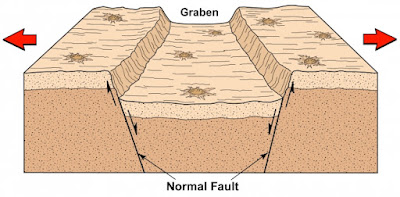NASA - NASA Spacecraft Reveals Recent Geological Activity on the Moon
New images from NASA's Lunar Reconnaissance Orbiter (LRO) spacecraft show the moon's crust is being stretched, forming minute valleys in a few small areas on the lunar surface. Scientists propose this geologic activity occurred less than 50 million years ago, which is considered recent compared to the moon's age of more than 4.5 billion years.
Smithsonian Institution Senior Scientist Tom Watters explains more about the Moon's recent geological activity in this short video.
New Images Show Recent Geologic Activity on the Moon | Newsdesk
In new LROC images, the team discovered small, narrow graben typically only hundreds to a few thousand meters (yards) long and tens to hundreds of meters wide, indicating the lunar crust is pulling apart at these locations. Graben are formed when the crust is stretched, breaks and drops down along two bounding faults, creating a trough or valley. The team proposes that the geologic activity that created the graben occurred less than 50 million years ago (very recent compared to the moon’s current age of more than 4.5 billion years).
Newly detected series of narrow linear troughs are known as graben, and they formed in highland materials on the lunar farside. Forces acting to pull the lunar crust apart formed the Virtanen graben, informally named for a nearby impact crater. These graben are located on a topographic rise with several hundred meters of relief revealed in topography derived from Lunar Reconnaissance Orbiter Camera (LROC) Narrow Angle Camera (NAC) stereo images (blues are lower elevations and reds are higher elevations). The rise is flanked by the rim of a ~2.5 km diameter degraded crater.
Graben are troughs formed when the lunar crust was stretched and pulled apart. This stretching causes the near-surface materials to break along two parallel normal faults, the terrain in between the twin faults drops down forming a valley.
Related
- Recent extensional tectonics on the Moon revealed by the Lunar Reconnaissance Orbiter Camera : Nature Geoscience : Nature Publishing Group
- Lunar Reconnaissance Orbiter Camera
- Moon images show crust pulling apart | ASU News
- Recent Geologic Activity on the Moon?
- Lunar Reconnaissance Orbiter reveals recent geological activity on the Moon
- Interior and Geological Activity
- Not Dead Yet: Moon Still Seismically Active | Wired Science | Wired.com

